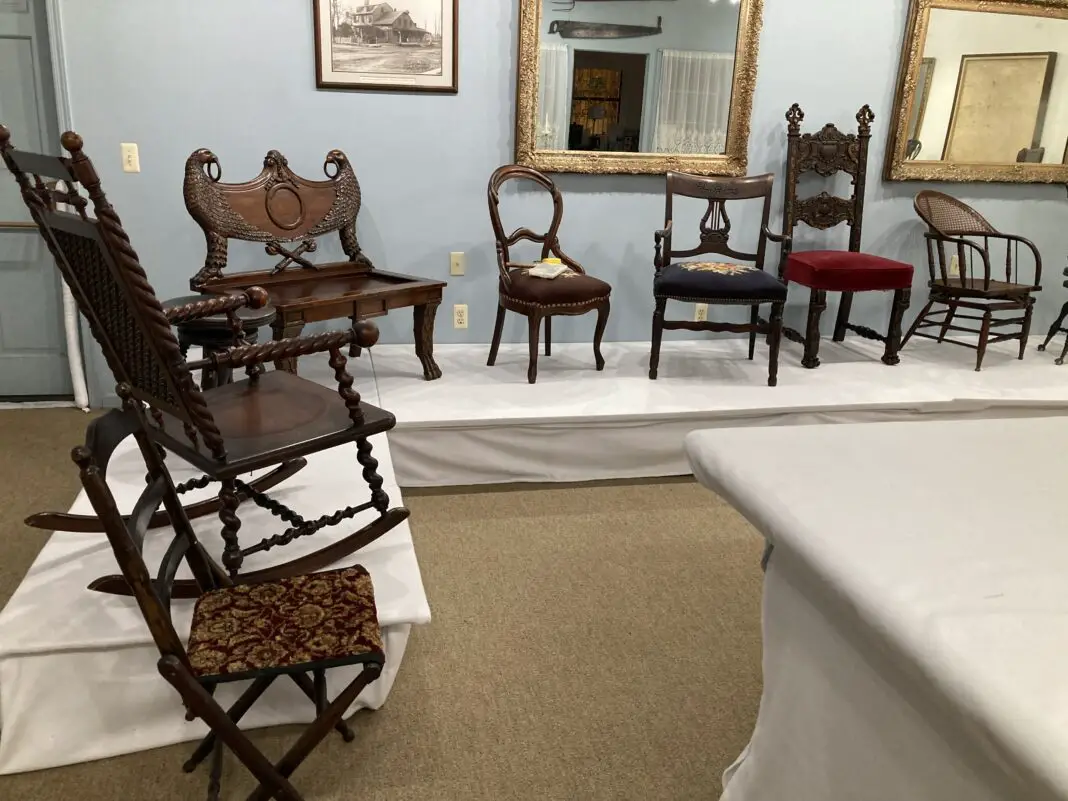A unique and talented blend of cooperative efforts, hard work and endless research has resulted in the outstanding Pull Up a Chair exhibit in the main room of the Eastern Branch library through Nov. 15.
This is an exhibit for men, women, and children, and is the perfect family entertainment for a rainy afternoon.
Sponsored by the Shrewsbury Historical Society and featuring more than a dozen of the antique and historical chairs from the Historical Society’s huge collection, the exhibit is the work of teams headed by Historical Society President Donald Burden and Eastern Branch librarian Kim Avigliano.
Set behind gold posts and red ribbon, the exhibit includes the chairs, added décor, well-placed identifications for each, and, as an added touch, books at the foot of each chair highlighting the type of carpentry or wood, the entertaining books that would have been read while seated in some of the chairs, and information on the chair’s design or materials. For instance, the children’s red rocker chair has a book, The Red Rocking Chair tucked at its foot, while the Sack Back Windsor Chair has a book about the Windsor era and furniture associated with it. The Civil War Camp Chair is ensconced directly in front of a full size Civil War soldier and information describes it as the type of chair commonly used during a field campaign’s military operations.
The Historical Society opens a companion exhibit with an even broader variety of chairs and information next month and continuing on Sundays as well as by special appointment visits at other times. Visit the Shrewsbury Historical Society site at www.shrewsburyhistoricalsocietynj.org or call for an appointment at 732-530-7974 or 732-747-3635.
Some of the chair’s in the Library’s exhibit include an adjustable swivel piano chair dating to the late 19th century, the Josts Chair, representative of the type produced in the 1920s, but made personal with the needlepoint seats designed and stitched by family members who owned the chairs. Learn why the embroidery is most often burgundy in color. The pine Desk chair, also from the early part of the 20th century, is an example of how carpenters created their designs on paper or leather then positioned them on the chairs for hole punching with different size nails to replicate the design in the pine wood.



